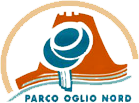Rural and industrial fluvial archaeology
Since ancient times the river has been the life form par excellence of the area. Trade flourished thanks to the river ports; being able to navigate the river not only made it possible to grow the local economy but also to move between the various towns which, although close to each other, were impossible to reach via other routes. The waters not only provided good fishing and irrigation for the fields but also allowed the mills to operate, grinding corn to obtain flour, or to work with iron and clay. The memory of days gone by can still be glimpsed by visitors who wander along the cycle lanes and footpaths of the park. Although man has contributed significantly to changing its appearance there has always been the utmost respect for that unwieldy force that it is best not to unsettle. In the historical archives of our towns and in our grandparents’ memories there are still recollections of the Oglio flooding: sweeping away everything in its path, destroying crops and farms. Many artificial canals and channels branch off from the river and make their way into the open countryside. Sluices, mills and bridges tell the stories of those who lived in this area and were able to exploit its virtues. The local reputation and dialects also recall the jobs and people that were linked to the river, for example, this is how the people from Rudiano became known as pescarì, or fishermen, and at Pumenengo la barcarola, or ferry, carried passengers and goods from one side of the river to the other. Over the years, industry has come to rely on the river: spinning mills and silk factories moved out of the farms into factories built on the banks of the waterway. Since ancient times the farmers in the valley had been producing silk since there was an abundance of mulberry trees which made silkworm rearing possible. This traditional activity is still remembered in some farm holiday establishments and is demonstrated not just to visitors but also to children on educational visits. Keeping these rural traditions and memories alive is not just one of the aims of the Parco Oglio Authority, but also of the local people.
Ditches, canals and channels create a dense network that is fed by the Oglio and has been created over the centuries by exploiting the natural inclination of the land.
 MENU
MENU



